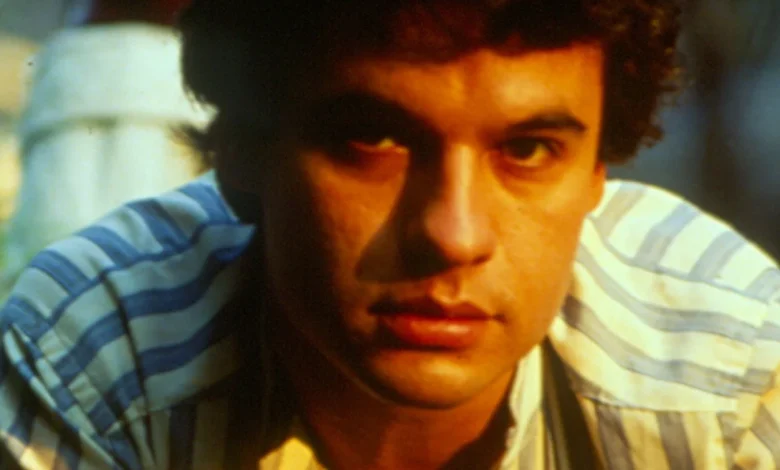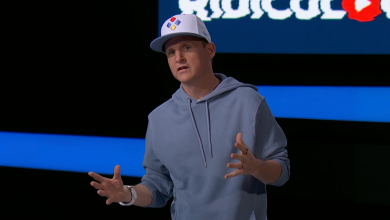If You Aren’t Already, ‘Debo, Puedo y Quiero’ Will Turn You into a Juan Gabriel Fan

Over the past couple of weeks, the Netflix documentary series “Juan Gabriel: Debo, puedo y quiero” (“I Must, I Can, and I Want To”) has become a topic of conversation at workplaces, kitchen tables, and cantinas across the Spanish-speaking world.
Though Juan Gabriel (born Alberto Aguilera Valadez) may not be a household name outside Latin America, his music reached the hearts of millions, while challenging some of the most ingrained taboos of the Spanish-speaking world.
An Intimate Take on Juangas’ Life
The uniqueness of “Debo, puedo y quiero” lies in its intimate perspective, achieved through Juan Gabriel’s personal archive of over 2,000 videotapes, photo albums, and audio recordings that narrate his life from 1950 until he died in 2016.
“I was tasked with portraying a character who was no longer alive, whom I had the fortune to get to know through the videos he left us,” reflects director Cuevas. This unprecedented access allows Juan Gabriel himself, to a great extent, to tell his own story, steering the narrative away from sensationalism and toward the profoundly human.
The series does not shy away from the darkest chapters that shaped Juan Gabriel’s sensitivity. Moving honestly, it reveals a childhood and youth marked by poverty, abandonment, and loneliness. It delves into the sexual abuse he suffered at age 13 and his youthful indiscretions, which landed him in prison as a teenager. But the docuseries does not stop at the trauma; it shows how these wounds became the root of his art.
“I made solitude my friend,” the artist confesses at one point, encapsulating the way every tear turned into a song and every absence into a melody.
Juan Gabriel, an Artist Forged Through Hardship
It was likely Juan Gabriel’s own suffering from such an early age that armed him with the gumption to say “screw it” and take enormous chances on himself. At 16, he had already begun to perform at nightclubs, most notably the “Noa Noa,” in which he wrote one of his earliest hits of the same name.
Juan Gabriel performing his earliest hit “Noa Noa” at El Palacio de Bellas Artes in CDMX.
This ability to transmute pain into joy resonated with the Mexican psyche. According to musicologist Guadalupe Caro Cocotle, Juan Gabriel became an icon because he embodied the sentimental ambiguity of the Mexican people.
“You read his lyrics and you think he’s slitting his wrists, and then you listen to him and see him, and it’s like a flamenco rumba… that makes you get up from your chair happy,” she points out. In songs like “Querida,” the initial pleading gives way to a jovial celebration. He denounces pain, but also sutures the wound, reflecting a culture that can laugh while honoring death.
Juan Gabriel’s Sexuality and Mexican Conservatism
His figure also challenged and redefined the paradigms of masculinity in a conservative social context. With his famous phrase “Lo que se ve no se pregunta” (what can be seen need not be asked”), he navigated the ambiguity of his sexual identity with a freedom that, ironically, earned him acceptance. The musicologist, Caro Cocotle describes Juan Gabriel as a figure who managed to “queer the Mexican alpha male,” offering him the tools to reveal emotions stemming from heartbreak but that also propose hope. For the first time, the audience saw an openly emotional sensitivity on stage, traditionally considered feminine, which made him a pillar of the “sentimental education of the Mexican.”
Another interesting aspect of Juan Gabriel’s life is the way he navigated his personal life, most poignantly with his four sons, whom he chose to raise in New Mexico, away from the prying eyes of journalists. While on stage, Juan Gabriel came off as a cross between Freddie Mercury, Elvis Presley, and Liberace — at home, his now-grown children describe him as a loving and doting father who would literally blow off the president if he was “doing something more important like playing with his children.”
Despite his exuberant personality, when off stage, Juan Gabriel would switch back to being Alberto Aguilera, and was noted for being a homebody who just wanted to spend time with those he loved.Photo: Courtesy Netflix
Aside from his own children, Juan Gabriel also spread his love and wealth widely, becoming the founder and benefactor of an orphanage and boys’ music school called Semjase. Reflecting on his philanthropy, Juan Gabriel always argued that it was something he was destined to do, knowing all too well what it was to be a lonely child with no one to cry on.
The documentary also traces his astute navigation within a hostile music industry, mediated by the Televisa monopoly and its conservative values. The series also examines Juan Gabriel’s controversial links to former President Carlos Salinas de Gortari, whom he openly supported during his 1988 campaign. His definitive consecration as a transgressive yet accepted figure came with his historic concert at the Palacio de Bellas Artes, a stage reserved for high culture.
The Road to Bellas Artes
During footage of the rehearsals for the concert, there are a handful of charming scenes where Juan Gabriel makes funny faces and jokes to win over the stuffy and conservative musicians of Mexico’s national orchestra, who, in all honesty, at the beginning, sure looked like they did not want to be there. By performing with the National Symphony Orchestra, Juan Gabriel demonstrated his performative capacity and his democratizing character, uniting the elite and the ordinary citizen in the audience.
Aside from his own hits, which were all of his own composition, Juan Gabriel was also a “hit maker”, composing iconic songs in a wide variety of genres for other artists, including Luis Miguel, José José, Rocio Durcal, Lupita D’alessio, and even Vicente Fernadez.
It must, however, be noted that despite his fame and talent, the concert at Bellas Artes would have likely never been possible without the insistence and patronage of Mexico’s first lady, Cecilia Occelli de Salinas.
“Debo, puedo y quiero” is the perfect excuse to turn up the volume to celebrate Juan Gabriel and his soundtrack, which reflects a complex, painful, but ultimately happy life. Directed by María José Cuevas, this four-episode production goes beyond a biographical chronicle to offer an introspective look into the internal fire that forged both the man, Alberto Aguilera Valadez, and the myth, Juan Gabriel “El Divo de Juárez.”
Senior Editor Carlos Rosado van der Gracht is a journalist, photographer and adventure leader. Born in Mérida, Carlos holds degrees from universities in Mexico, Canada, and Norway.





